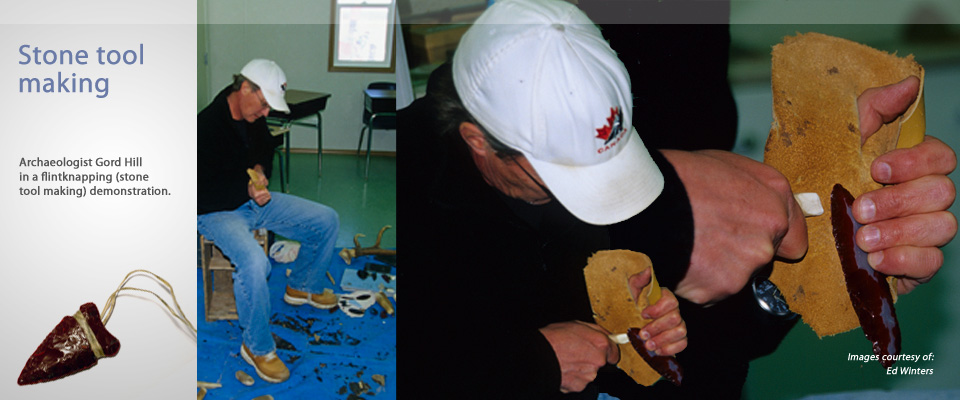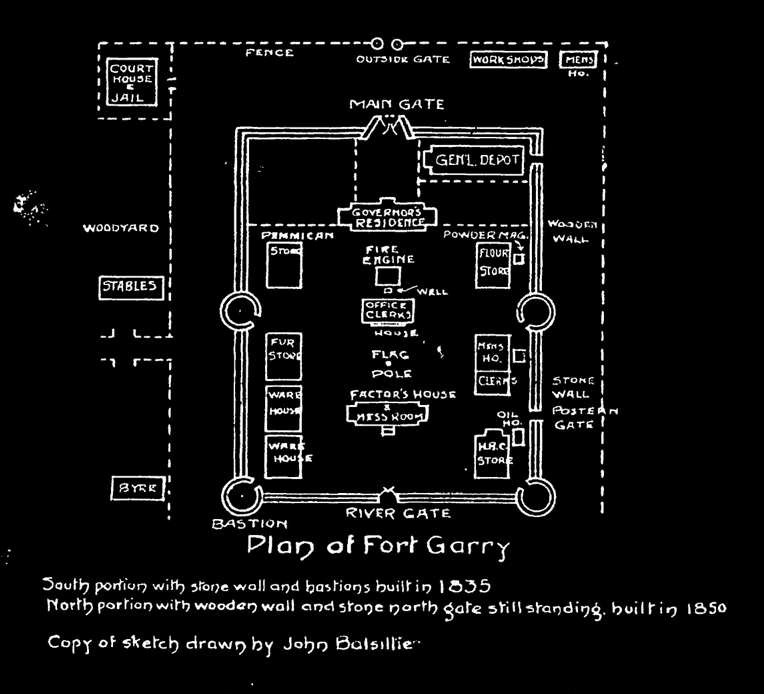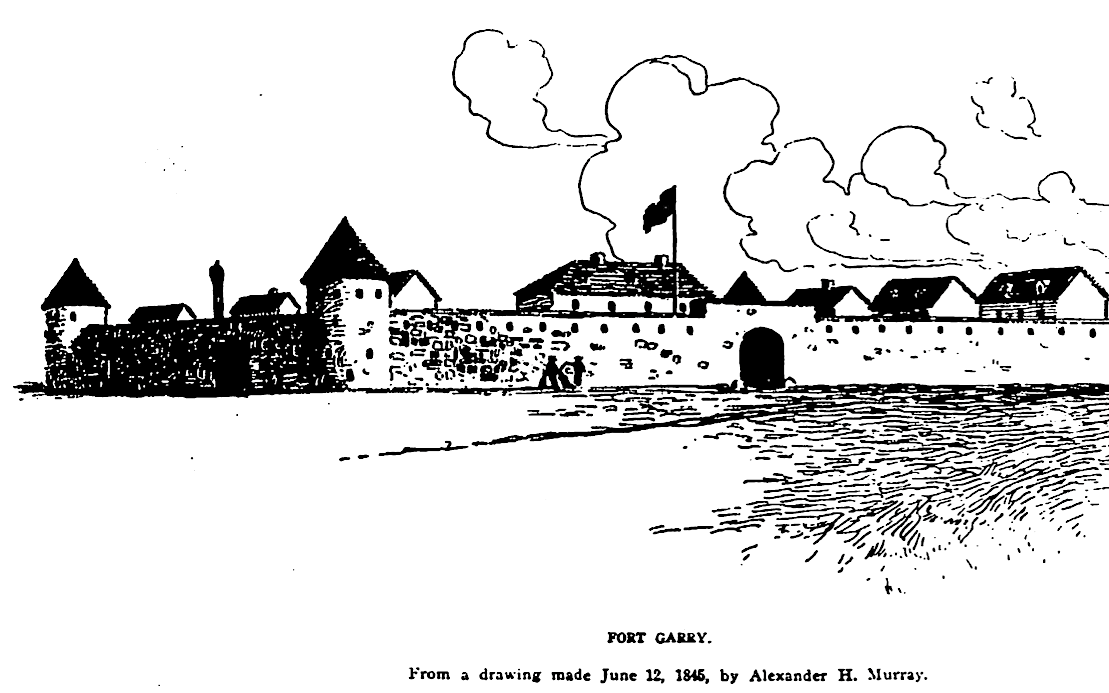Upper Fort Garry
|
Construction of Upper Fort Garry began in 1835 for high-level employees and administrators and was considered to be the centre of operations of the Hudson’s Bay Company. The fort is located at the junction of the Red River and the Assiniboine River in the heart of downtown Winnipeg, just 20 miles downstream from Lower Fort Garry along the Red River. During the 1850s, the size of Upper Fort Garry increased, with many additions in structures to the north side of the fort. Buildings of Upper Fort Garry consisted of a courthouse, office buildings, government buildings, dwelling houses, and sales stores such as a flour store, pemmican store, fur store, and a liquor store. In 1882, the property was divided into individual lots and sold privately. Only a small plot remained of Upper Fort Garry, which today is known as the Upper Fort Garry Heritage Provincial Park and is under the responsibility of the City of Winnipeg’s Parks and Recreation Department. With the separation into private lots and the expansion of Main Street in downtown Winnipeg, many of the original buildings and walls of Upper Fort Garry were taken down or destroyed by 1883. Today, only the walls of a gate on the north side of Upper Fort Garry remain. The two-storey limestone walls join together by an arch in the middle. The walls contain a number of gun ports with larger openings at the second storey portion of the wall. The wooden doors of the gate are no longer the original doors and are no longer functionable, due to beams and posts that have been installed to support the structure. |
|
A plan of Upper Fort Garry by John Batsillie Source: Loewen and Monks (1986:93). |
|
Upper Fort Garry was a great focus for political developments in the Red River Settlement and the entire North-West region. Along with political influence in the 1800s, the Fort represented social, cultural, and economic life and was an architectural symbol of the Hudson’s Bay Company. Architecture styles at the time were unique to Upper Fort Garry, which consisted of multiple two-storey stone houses and dwellings, which were not commonly found outside of the Fort. Upper Fort Garry maintained a legal monopoly in the trading of furs and established the dominance of the company in the North West area for many of the early decades of the 1800s. With the economic and social life centered around the Forks, the Upper Fort Garry site allowed the Hudson’s Bay Company to govern the entire Northern department and the Red River Settlement. Resistance from the Métis community, who often sold furs to the settlers, and the commercialization of furs, the monopoly that was once established by the Hudson’s Bay Company was broken. Upper Fort Garry was briefly captured for a short time by the Métis during the Riel Rebellion in 1869. Public interest around the only remaining original structure of Upper Fort Garry prompted Parks Canada and archaeologists to excavate around the walls of the north gate. Two areas were excavated, the roadway through the gate and a portion of the north palisade of Upper Fort Garry. The excavations revealed information around the original occupation of the Fort from 1835 to 1882 and the newer northern addition of the Fort from 1850 to 1882. Artifacts from excavations of these areas include fragments of a glass food jar (likely from the 19th century), hand-forged nails and machine cut nails, fragments of a clay smoking pipe, pieces of limestone and wooden planks (believed to be debris from construction), remains of a palisade, along with artifacts that are post-occupation, or after, the date of Upper Fort Garry. The last standing structure of Upper Fort Garry is located on 130 Main Street, Winnipeg, Manitoba, just across from the street from the historic Fort Garry Hotel. The gate is surrounded by a green space with picnic areas and is free to visit. |
|
A drawing of Upper Fort Garry by Alexander H. Murray, made June 12, 1845. Source: Loewen and Monks (1986:36) |
References Cited
Friends of Upper Fort Garry
2021 Upper Fort Garry. http://www.upperfortgarry.com, accessed December 31, 2021.
Loewen, Brad and Gregory Monks
1986 A History of the Structures at Upper Fort Garry, Winnipeg, 1835-87. Microfiche Report Series 330, Canada Parks Service. Environment Canada, Ottawa.
Monks, Gregory
1992 Architectural Symbolism and Non-Verbal Communication at Upper Fort Garry. Historical Archaeology. Vol. 26, No. 2: 37-57.
Priess, Peter J.
1980 Archaeological Investigations at Upper Fort Garry, 1978. Parks Canada Research Bulletin no. 125.






